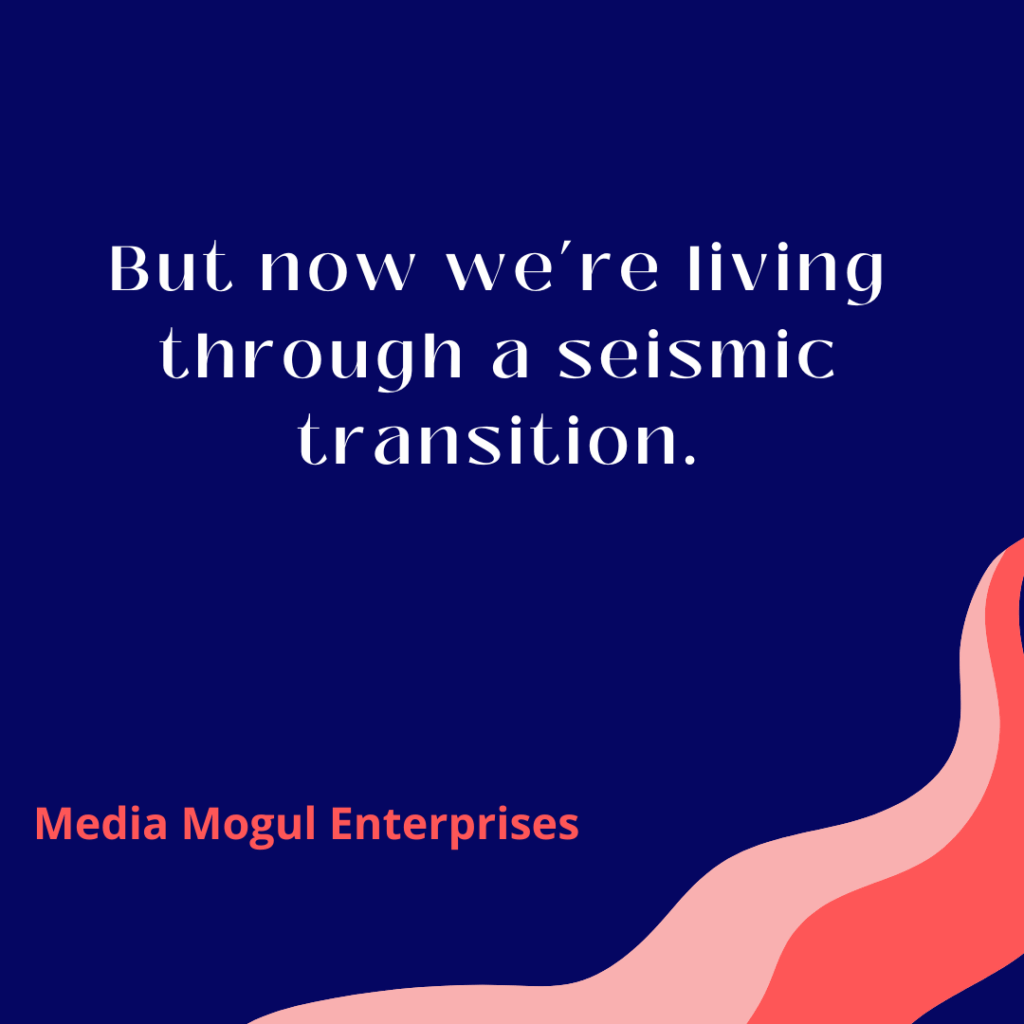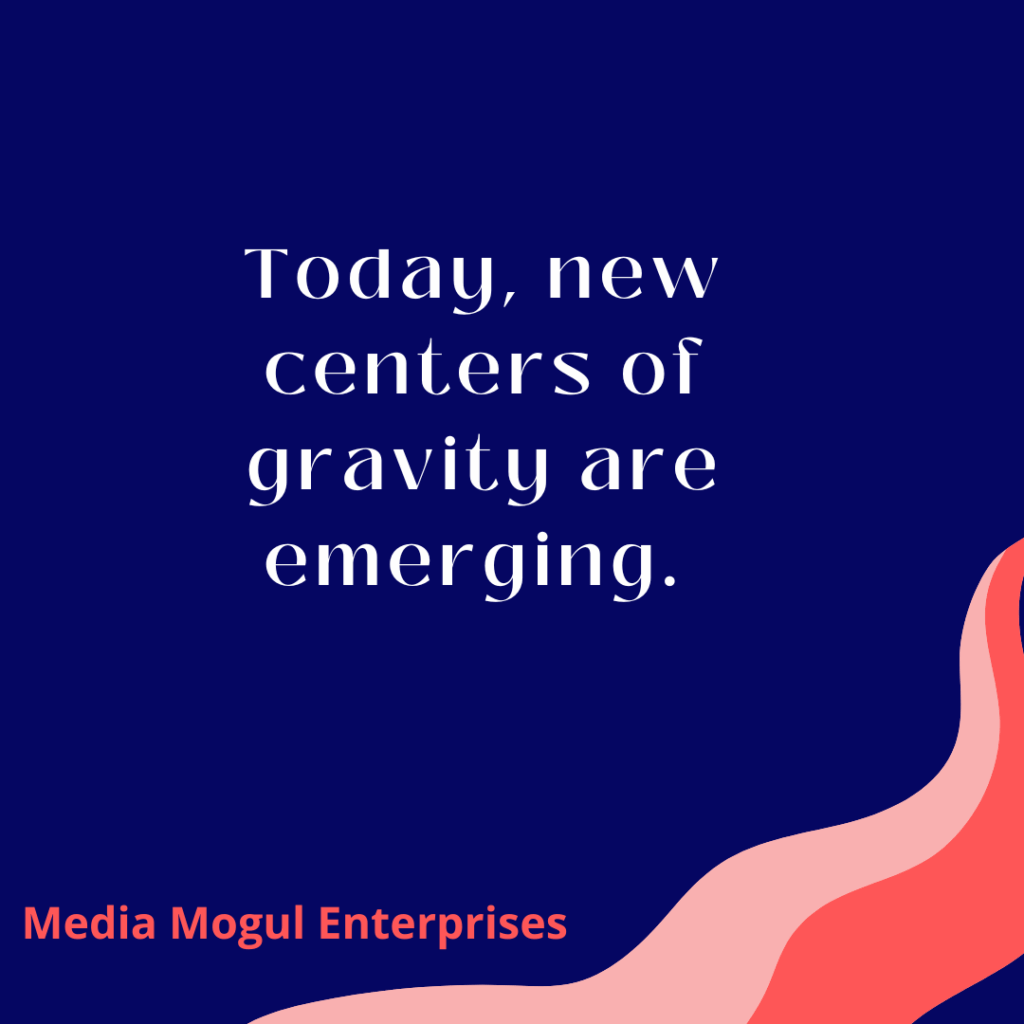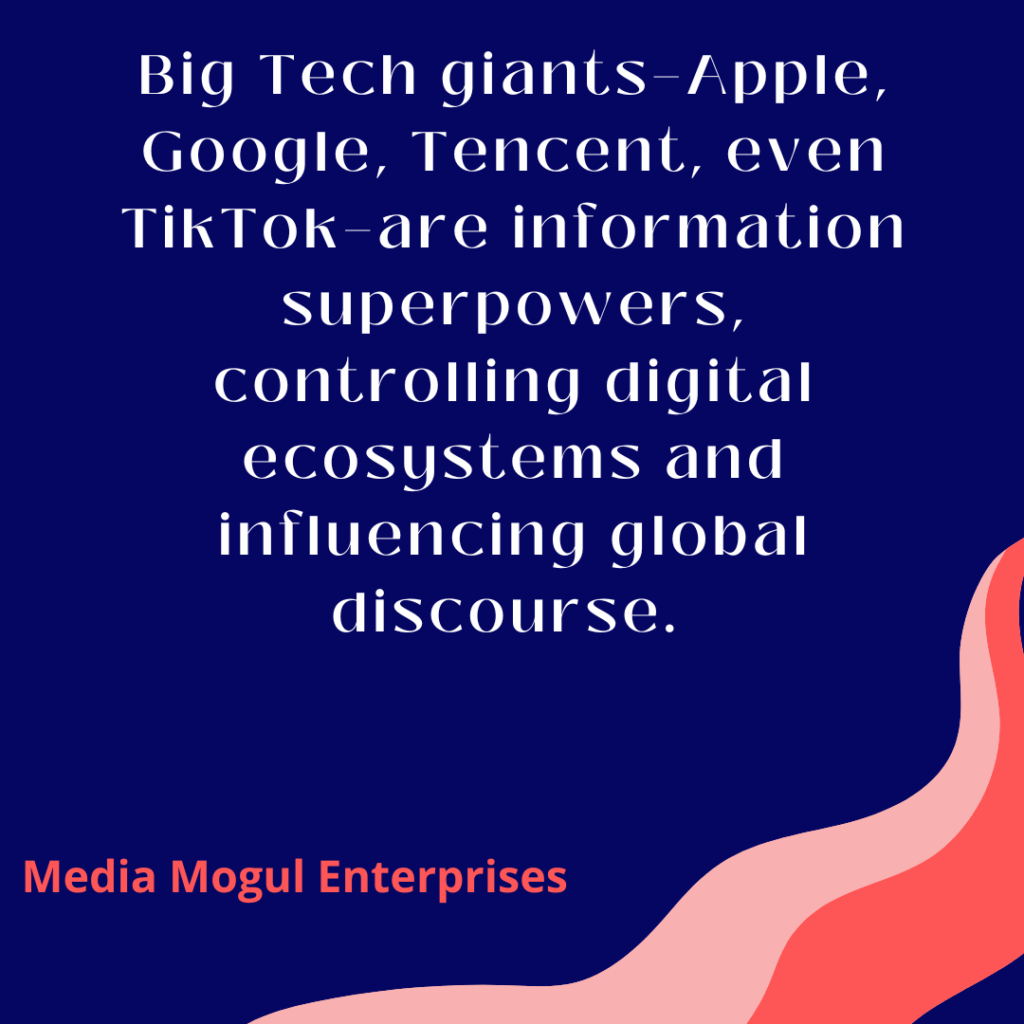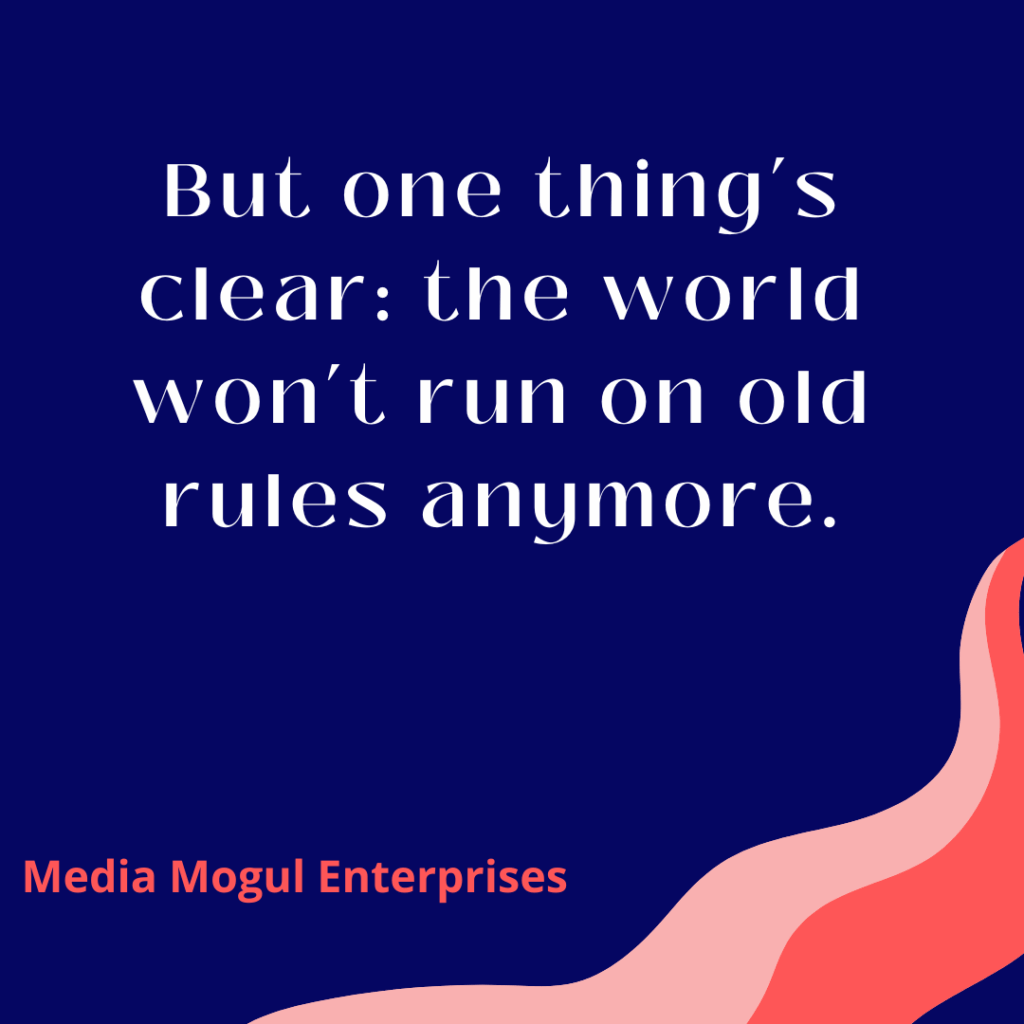Digital Trend Alert
examining hot topics in the high-tech, entertainment and digital industries

The Big Shift: from one power to many
by Carol Ingley, president
Media Mogul Enterprises
Digital Trend Alert
April 28, 2025 through Week of June 9, 2025
The Age of One
Ask any American today what they value. The response would likely be a variation of the following: opportunity for all, helping others and the work ethic. This has been true since the inception of the United States. These values led to economic success with the U.S. ending up at the top economically.
That is, it used to be the age of one. But now we’re living through a seismic transition: the slow shift of U.S. dominance in power and responsibility to the messy birth of a multipolar world. Power is no longer parked in one place—it’s being redistributed, reimagined, and contested. For decades after the Cold War, the U.S. stood alone at the summit. Its military reach was unmatched, its economy the largest, and its cultural influence global. Washington set the tone on everything from military coalitions to financial systems to internet governance. But nothing stands still over time.

Enter the Multipolar World
Clearly, there will likely always be one country that leads and takes on global responsibilities. But, today, new centers of gravity are emerging. China isn’t just a factory for the world anymore—it’s building global infrastructure through its Belt and Road Initiative and challenging U.S. dominance in AI, semiconductors, and defense tech. India, now the world’s most populous country, is asserting itself as a diplomatic and economic heavyweight. The European Union (EU), often underestimated, continues to flex its regulatory power, setting global standards on data privacy, AI ethics, and sustainability. If looking at the countries with the largest gross domestic product, four countries from the EU (Germany, France, U.K. and Italy) are in the top ten.

New Powers, New Players
This isn’t just about nations. Big Tech giants—Apple, Google, Tencent, even TikTok, as examples—are information superpowers, controlling digital ecosystems and influencing global discourse. In addition, AI is supercharging individuals and startups, giving non-traditional players unprecedented leverage.

Finding our Footing
The big challenge now is to adapt global governance to fit this new reality. That means updating institutions to reflect today’s power map. It means giving emerging voices a seat at the table. It also means involving tech firms, civil society, and even AI systems in global dialogue.
What Comes Next?
No one knows exactly what the future holds. But one thing’s clear: the world won’t run on old rules anymore. Navigating the new era will require cooperation, creativity, and a willingness to share power—and responsibility. And one would hope that the values upon which the U.S. was built, do not get lost. Instead, these values become integrated into the new structure and frameworks that are developed over time.

About Carol Ingley
Carol Ingley heads up the Media Mogul Enterprises ecosystem. She is a consultant, technologist, and futurist specializing in space, media and AI.
